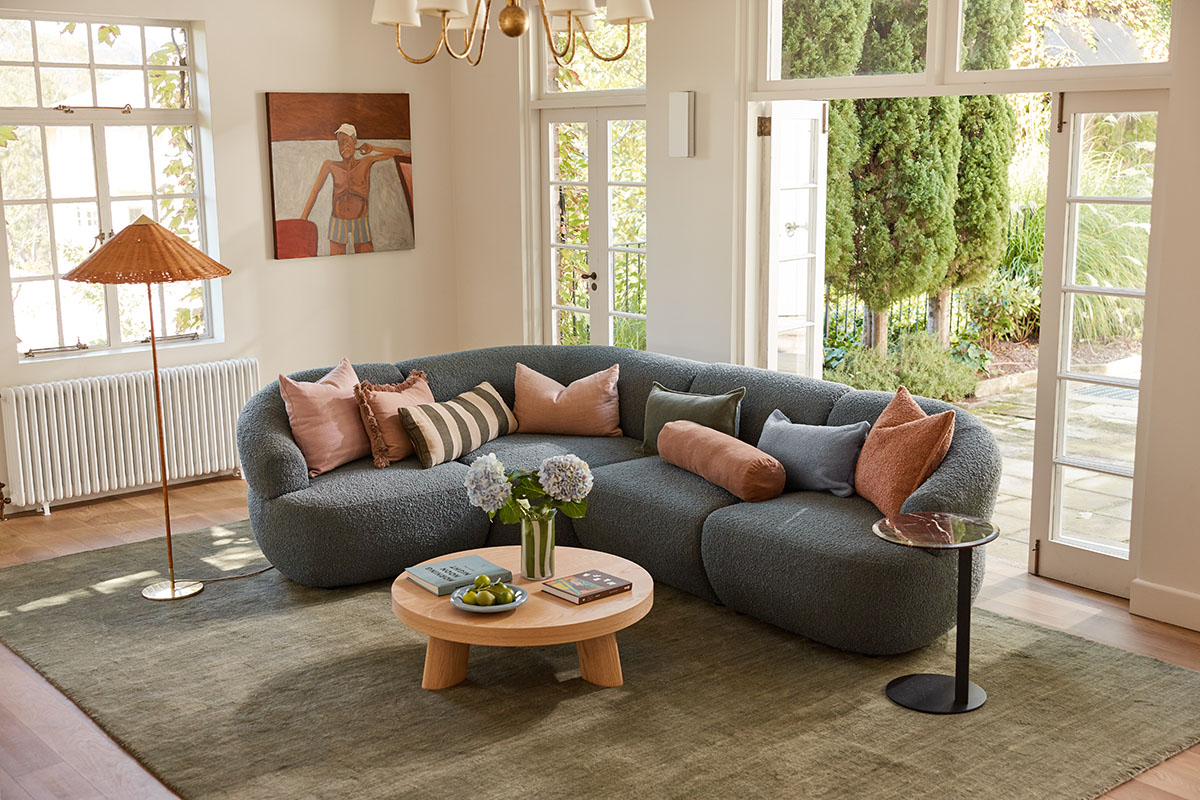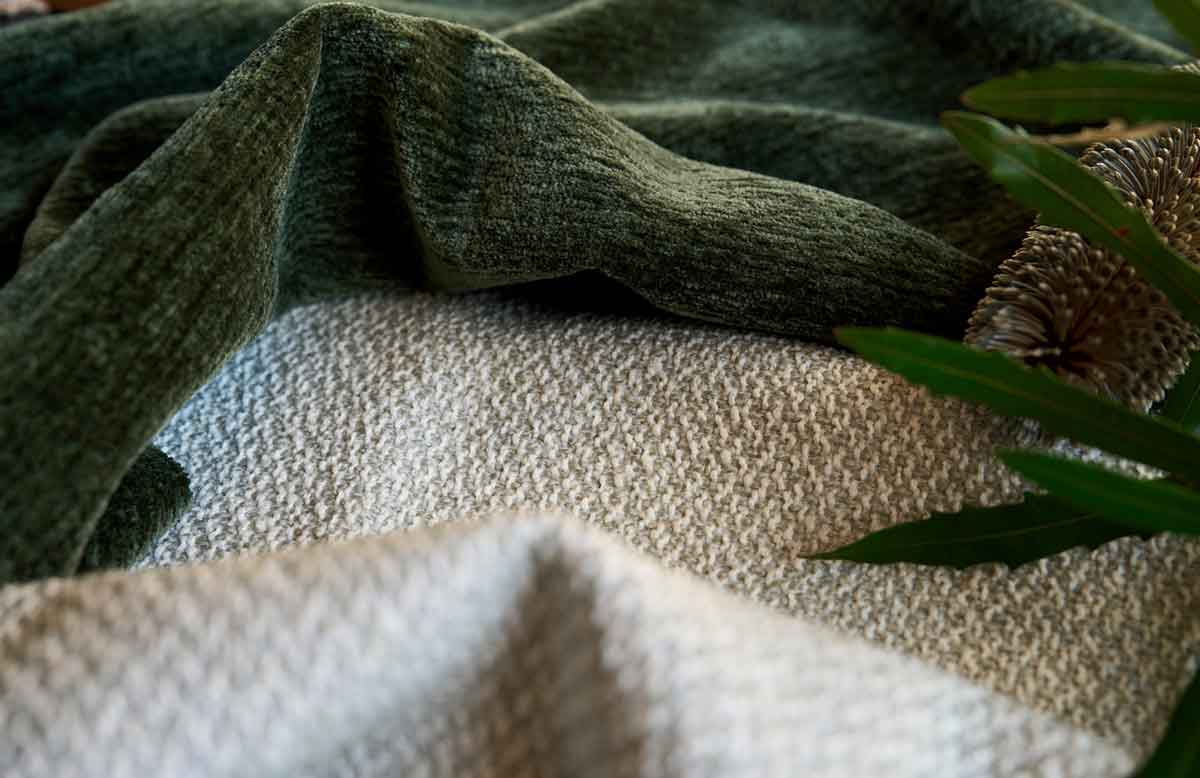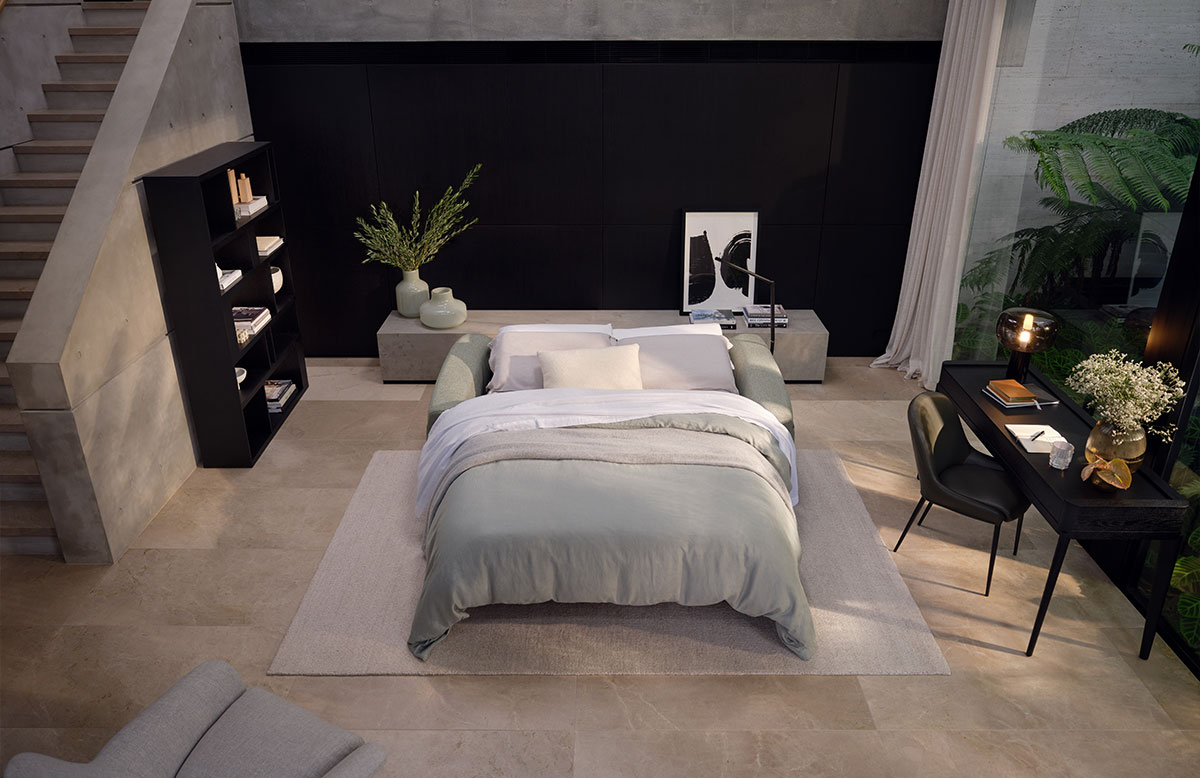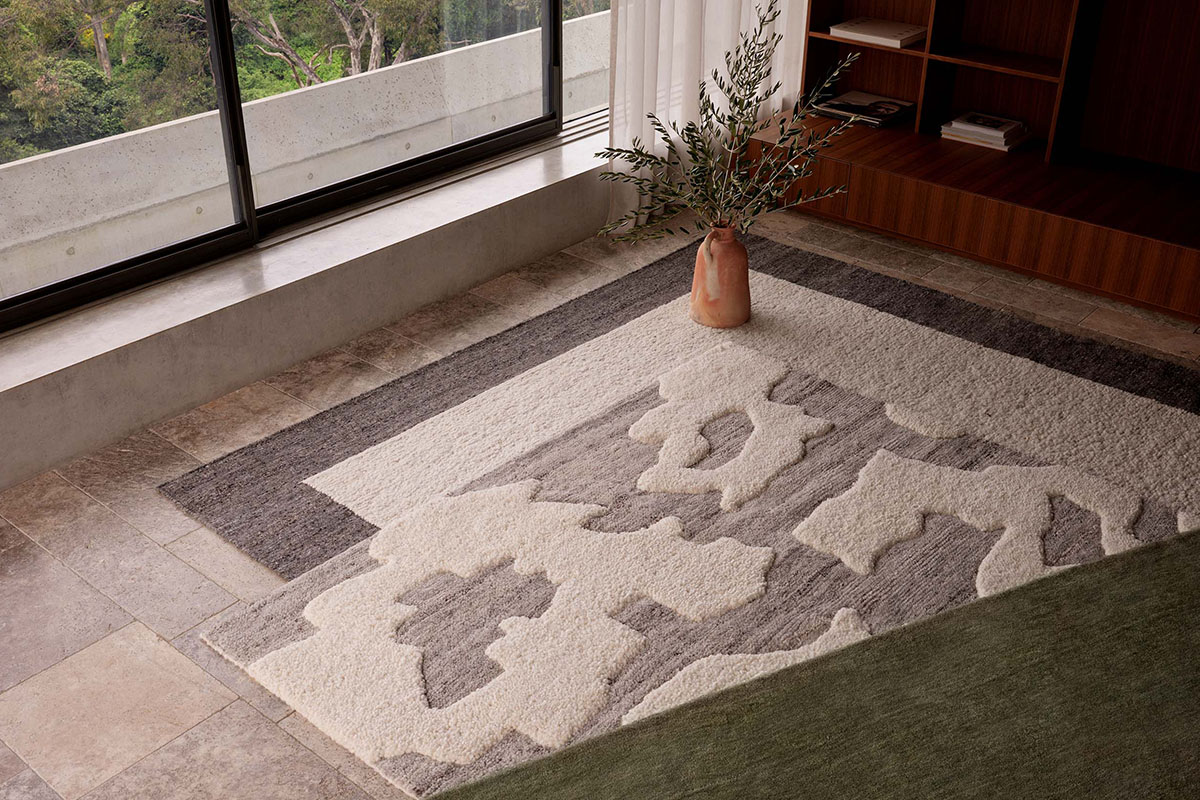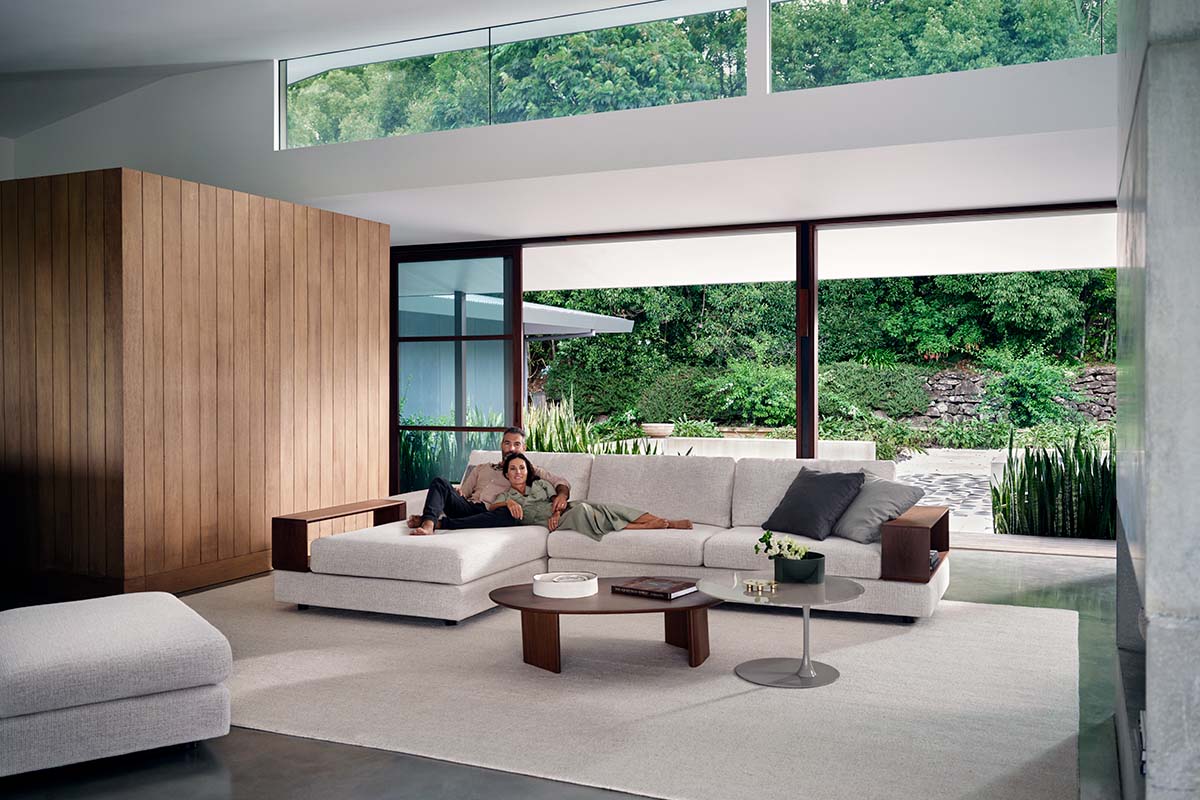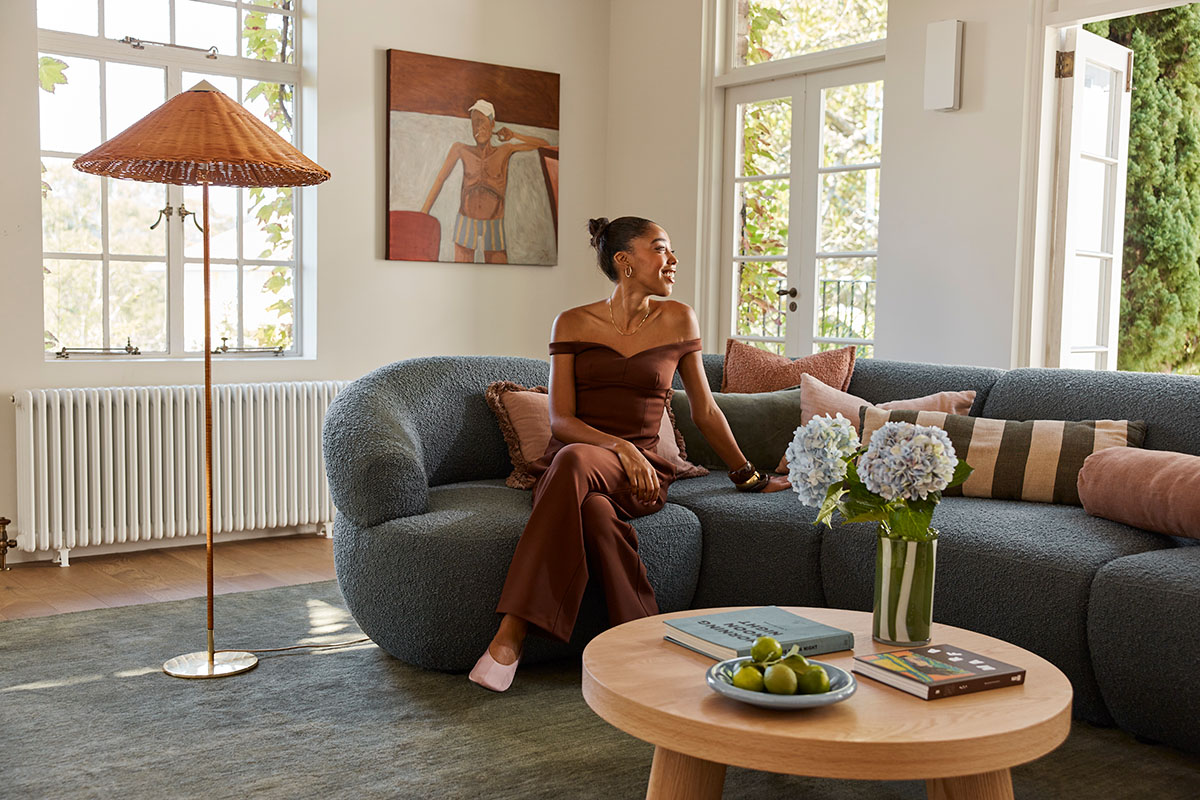
Sydney Designer Mariah styles the Aura Sofa two distinct ways and shares 11 ways to infuse color into your space
Good design begins with intention, and few tools are as powerful in shaping a space as color. Whether you're craving calm, seeking joy, or expressing your individuality, color provides the visual language that transforms interiors into personal sanctuaries.
For the King Living Room Project series, Sydney interior designer Mariah Burton reimagines one space in two distinct styles and configurations. Guided by her intuitive use of color, Mariah styles the Aura Sofa in two palettes, showcasing just how transformative color can be, especially when paired with modular furniture that can be rearranged into new layouts.
Her approach, which she describes as “joyous, enduring, and custom,” invites us to think intuitively and design spaces that are both beautiful and functional.
If you’re wondering how to add color to a neutral living room, here is your guide.
Meet your design expert, Mariah Burton
As Co-Founder and Lead Director of Folk Studio, Mariah Burton brings exceptional style and human-centred thinking to every project. Her interiors are rich in personality and practicality, reflecting a deep understanding of how good design can shape wellbeing.
“Design is innate for me,” she says. “It’s about enhancing people’s mental and physical wellness and creating interiors that are as liveable as they are beautiful.”
Here, Mariah shares her top strategies for bringing color into your home, thoughtfully, accessibly, and with designer-level polish. Her guiding principle? “Form follows function.”
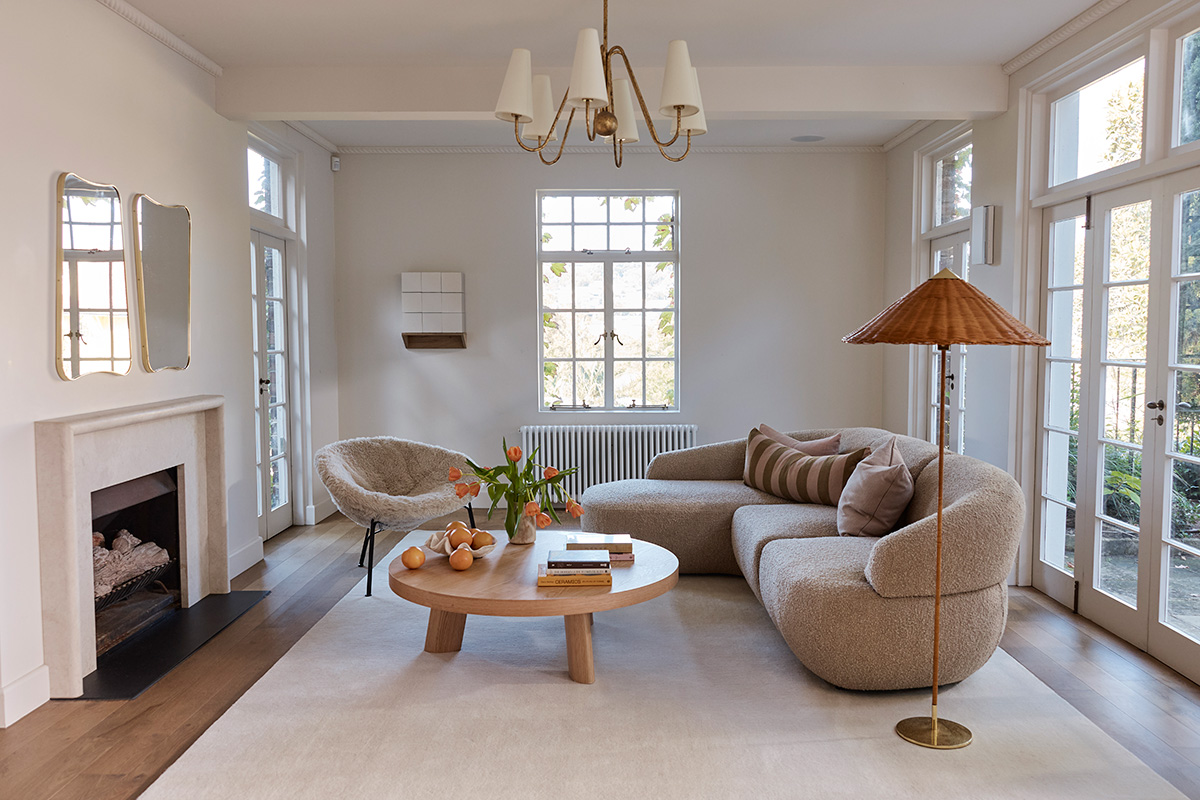
1. Build your palette with purpose
Every successful colorful interior begins with a deliberate palette. Mariah recommends starting with three to four core colors. A considered blend of base, secondary, and accent tones will ensure the room feels both harmonious and personal.
“Start with three or four colors in your scheme, then build from there using accessories. For me, it's really intuitive. I choose colors that I think complement one another, but it's more about the feeling, rather than going with a trend driven approach.”
This ensures visual cohesion while allowing flexibility. Once your foundational palette is set, you can add nuance with colorful home decor and unexpected shades pulled from florals, books, or artwork.
2. Choose solid colors for anchor pieces
Large furniture pieces, particularly sofas, are the anchor of a room and can act as a statement piece and focal point. By opting for solid colors you create both visual calm and design versatility.
"I always start with the sofa. The sofa is the hero of the living space, and from there you can build the room."
Mariah styled the Aura Sofa in two fabric variations with Lennox Dark Teal and Lennox Camel to demonstrate the transformative effect of color alone.
“The camel is a really good base tone. It pairs beautifully with warm neutrals and lets you experiment with accessories. The Lennox Teal, on the other hand, softens the space and brings in a refreshing energy, especially when layered with other blues or greens.”
If you’re looking at how to add color to your neutral living room, remember to choose solid colors for your sofa or rug, to ensure you create a stable canvas that can evolve through the seasons or shifts in personal style.
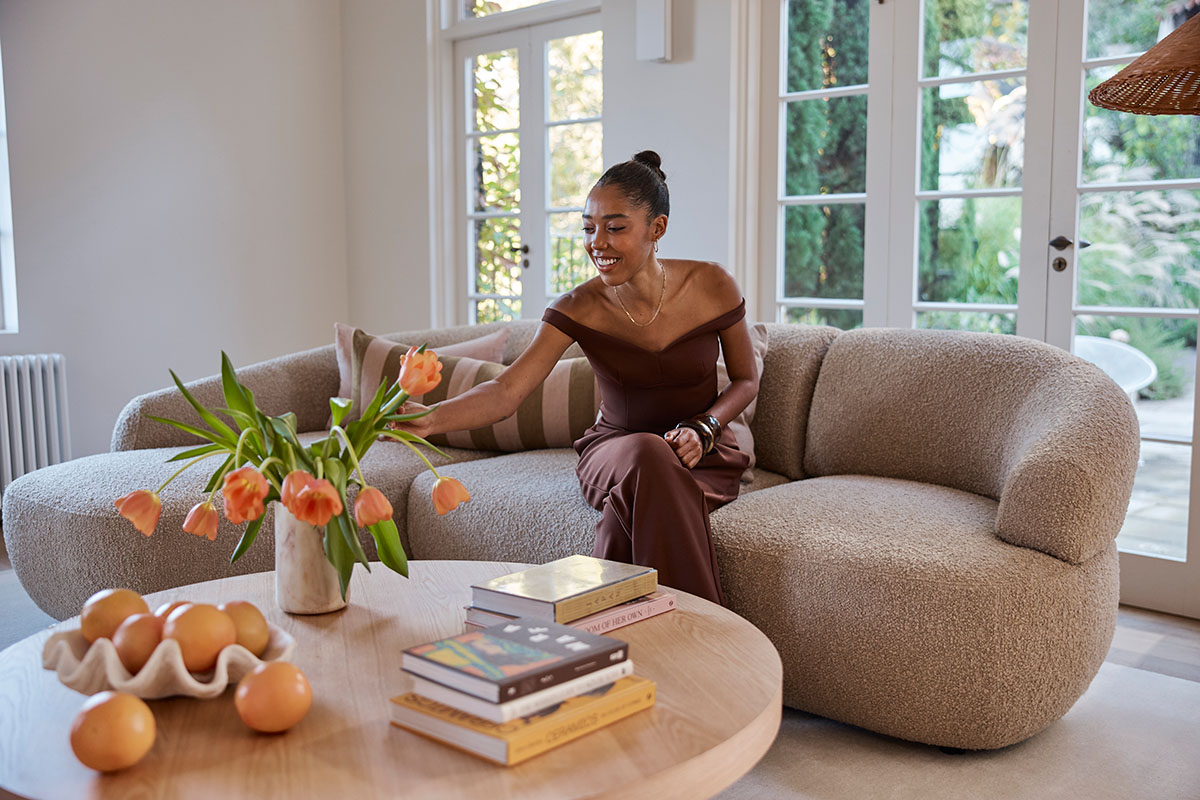
3. Weave in pattern through detail
While Mariah’s signature interiors lean toward tonal simplicity, she strategically introduces pattern in smaller, considered ways through colorful home decor. Think a striped cushion, a marbled ceramic, or the expressive cover of a coffee table book.
“We don’t use a lot of pattern, but where we do, it’s often through materiality — marble, ceramics, accessories. A coffee table book is the perfect hack. If you don't have the budget to style the space heavily with art or sculptural pieces, you can really introduce a lot of color through books and also the beautiful prints that are on coffee table books.”
Pattern in accessories can be easily updated or rotated, keeping your space feeling fresh.
4. Prioritize balance and scale over boldness
In Mariah’s designs, restraint plays a key role. Rather than overwhelming a space with color or pattern, she lets each piece breathe, creating a colorful house interior with a sense of clarity.
“I stick with block colors because they’re softer on the eye and still let you play with variety. The color does the heavy lifting, not the pattern.”
"The look is quite neutral and natural, but the color and texture comes through all of the accessories, like the beautiful grapefruits, the tulips, the books. All of these things add color and depth to the space.”
Try following a 70-30 balance: 70% solid tones, 30% pattern or texture. This keeps the look refined and grounded.
5. Let your timbers mismatch
The idea that all wood tones must match is one Mariah encourages clients to move past. A variety of timber finishes creates depth, incorporates warmth, and adds visual interest.
“People get nervous if their coffee table doesn’t match their floors. But mixed timbers actually bring in more texture and personality. You don’t want everything to blend in. Contrast adds life. It’s a big yes for me.”
To tie mixed timbers together, use surrounding elements like rugs, textiles, or wall tones to soften the transitions.
6. Make cushions your color playground
Cushions are a designer’s secret weapon. They are small but mighty tools for introducing color, layering texture, and altering mood.
“You can never have too many cushions. I layer them with subtle stripes, tonal shifts, or lush materials to bring richness into the room. Even if your base is neutral, cushions can do so much.”
Experiment with arrangement and spacing, and don’t be afraid to mix materials or contrasting textures like velvet, linen, or bouclé.
7. Choose art that speaks to the room
Art is a storyteller. Mariah selects pieces that resonate with the overall color story but doesn’t restrict herself to perfect matches, ensuring the meaning and feel is both curated and effortless.
“You don’t need the art to match the furniture. But I love when it draws out accent colors from the space. That’s what makes it feel considered and curated."
Whether it’s a bold abstract or a subtle print, the right artwork can become a conversation piece. Even a single artwork can introduce a new hue that anchors the palette or adds unexpected contrast.
8. Create contrast through texture
Texture adds dimension without adding clutter. Mixing materials in the same tonal family is a subtle way to infuse color without relying on bold hues.
“I love the bouclé fabric on the Aura Sofa. It's not a flat color or texture, so it just adds a bit more depth to the space. It pairs with the Yowie fabric on the armchair perfectly.”
To create variety without straying from your palette, layer natural accents like linen, timber, stone, and woven materials. These add richness and balance, grounding more colorful or contemporary elements.
9. Refresh your space with a sofa cover swap
One of the simplest ways to transform a room is by changing your sofa covers. Mariah demonstrates this with the Aura’s camel and teal iterations — same sofa, two entirely different moods.
“The modular design means you can reconfigure it as your needs change, whether you’re hosting, relaxing, or rearranging your layout. And just by switching the fabric, the whole room evolves.”
Thanks to the removable covers on the Aura Sofa, you can create a high-impact update that doesn’t require replacing your sofa.
10. Be bold through accent furniture
When you want to play with color more boldly, consider injecting it through accent pieces like side tables, armchairs, or stools. These items offer flexibility and impact in equal measure.
“The Yowie fabric on the armchair added this beautiful, fluffy texture and a fresh tonal variation. Accent furniture is a great way to experiment with bolder hues or shapes.”
Think of these pieces as your room’s punctuation marks, expressive but strategic.
11. Evolve your color story with the seasons
Mariah’s styling often reflects the moment with seasonal shifts and personal fashion that influence palette and mood. Let your space do the same.
“Color reflects how you feel, and the seasons are such a great cue. It's usually colors that I'm loving personally or that I'm loving in fashion that find their way into my styling."
Update your cushions, throws, or florals every few months to reflect your evolving mood and environment.
Final thought: color is a feeling
Color isn't a formula. It’s not just something to get right. It’s something to feel. Mariah’s approach is both elevated and intuitive, blending designer intention with emotional resonance. And proves you can easily add color to a room without painting the space.
If you’re navigating color decisions for a specific room, purpose, or aesthetic, start with feeling, then apply these designer-approved principles:
-
To match your existing decor, choose accent colors that echo tones already present in your flooring, upholstery, or timber finishes to create a cohesive look. This will ensure the room “feels considered and curated.”
-
To create a more vibrant living room, consider layering bold citrus tones, cobalt blues, or rich rusts through artwork, cushions, or florals. “We add pops of color where we can through artwork, cushions, bowls, fruit, florals.”
-
To design a calm, peaceful space, opt for a palette of soft neutrals, sage greens, muted blues, and warm taupes, enriched by natural textures and soft layering.
-
For a new room, begin by asking how you want the space to feel and then select colors that express that mood, whether it’s restful, energising, or inspiring.
-
To refresh a neutral, beige, or grey living room, introduce color through accent pieces like throws, vases, or statement art that add contrast without overwhelming the space. “Even a red book or blue artwork can bring through the color you want to highlight in the room.”
Whether you’re deciding how to add color to your neutral living room, reinventing a space or simply incorporating a new hue to your cushions, every detail contributes to the mood you live with. And when color is chosen with care, it’s transformative.
For more styling and interior design inspiration, follow Folk Studio on Instagram.
Continue your color journey here or take the next step in your interior design upgrade and learn how to balance curved and straight lines.











